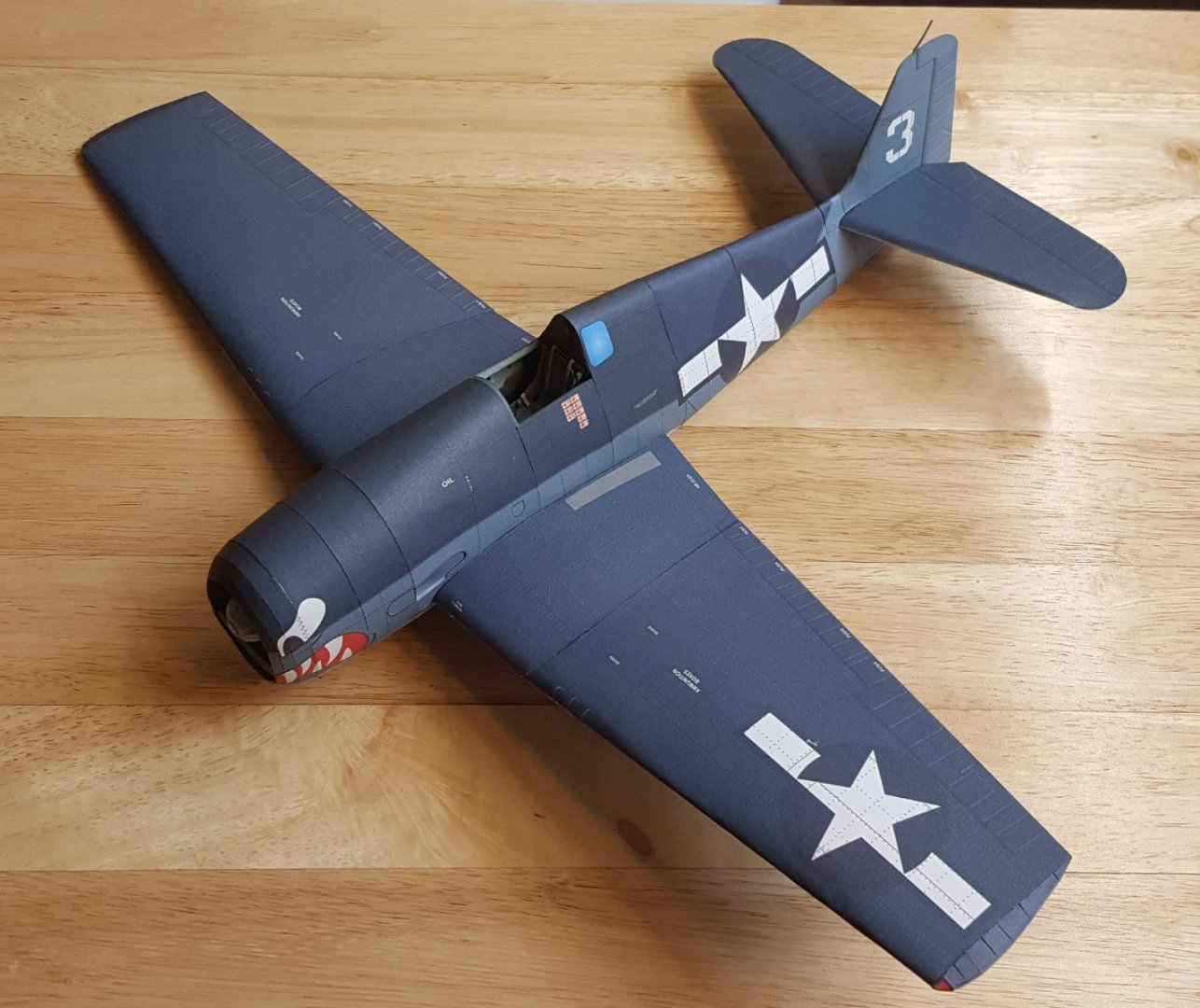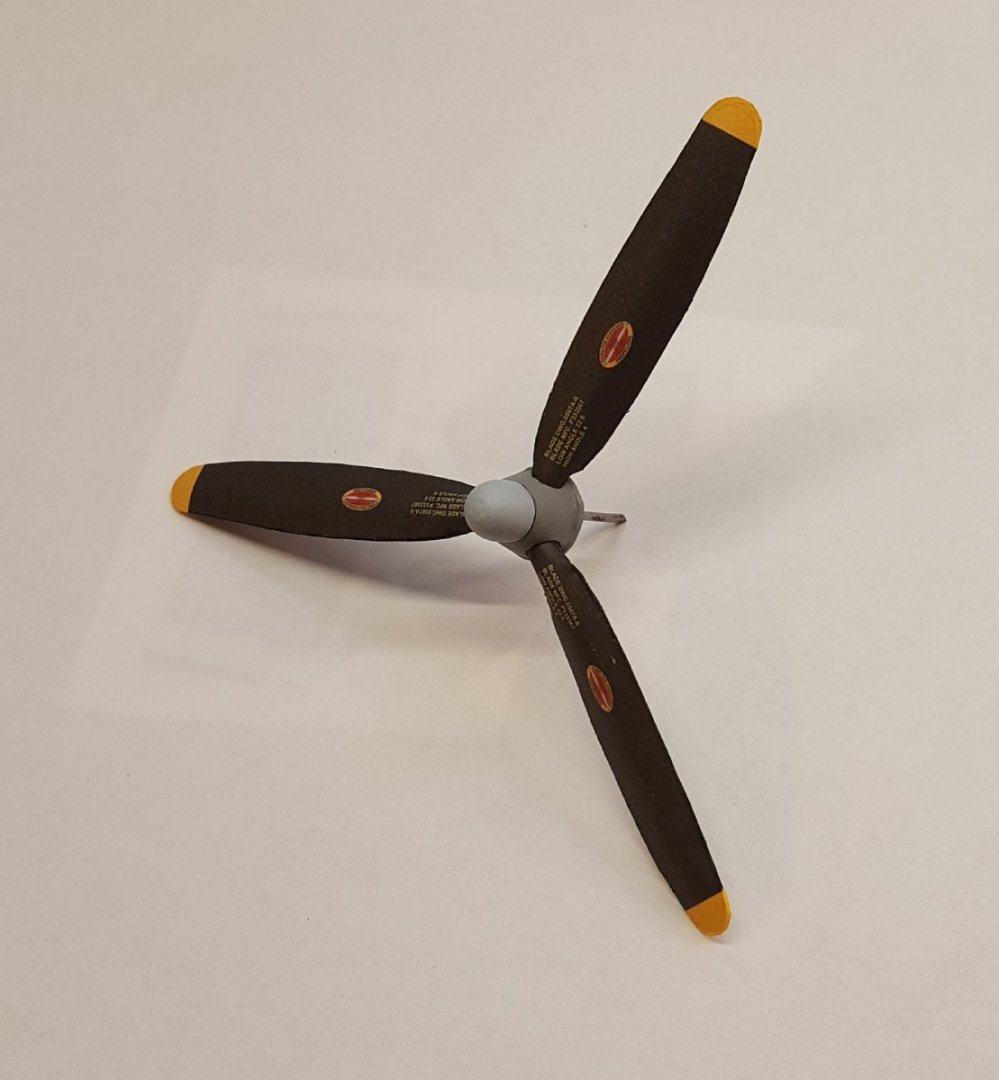-
Posts
10,536 -
Joined
-
Last visited
Content Type
Profiles
Forums
Gallery
Events
Everything posted by ccoyle
-
Welcome aboard! My dad did the same, but for B-47s in the USAF. I commend you for getting back to your project after a 37-year layoff -- have fun completing it!
-
Quick update -- wings and stabilizers attached to fuselage. I'm still impressed by the aircraft's sheer size. The model is a bit over 11 in. in length and has an almost 16 in. wingspan. I couldn't clear away enough clutter off my workbench to make room for this shot, so I had to move the 'Cat to a different table.
-
Indeed -- but perhaps just a little out of place alongside all that shiny teak and brass! 😉
-
Piękny! Gratulacje! Only one more to go!
- 69 replies
-
- soleil royal
- deagostini
-
(and 1 more)
Tagged with:
-
Welcome, Nathan! That's an impressive display case. You'll find that we have many members who enjoy working on a variety of subjects in different kinds of media.
-
That is looking spectacular, Tomek!
- 26 replies
-
- Seahorse
- De Zeven Provincien
-
(and 2 more)
Tagged with:
-
Thanks for the photos, gentlemen, but I already knew that the blade clamp portion of the hub was not a good likeness of the real thing. It's just one of several features of the kit that do not match up well with the original. It's kind of annoying, actually -- if I wasn'tbuilding this kit for a friend, it might have already wound up in the pile of Misfit Models. But I will muddle along. BTW, more faithful card renditions of these blade assemblies w/o spinners do exist in other kits, but they are also substantially more complex, as you might imagine. BTW #2: Doc, your photos make me sad -- because they reinforce how bad the air intake portion of the cowl on this kit is. 😜
-
So, I promised a shot of the finished propeller, so here it is. Yay. My joy upon completing this task was cut short once I started work on the canopy. The vacu-formed canopy has proved to be roughly 20% too large for the frames. 🙄 Are the frames too small, or the canopy too large? Yet more puzzles to solve for this kit. 😑
-

Deepest shipwreck yet found - Destroyer Sammy B Roberts
ccoyle replied to AJohnson's topic in Nautical/Naval History
I have, and I would likewise recommend it. -
Okay, so no finished propeller yet, but I am slowly making progress on it. What I have learned so far is that this NOT a kit I would recommend for non-Polish speakers. Like I said earlier, there appears to be two different ways to build the propeller hub, and no hint is given in the diagrams about why or whether to use one over the other. The ring that holds the three blades is designed like nothing I have ever seen in a kit before, and this one part alone has been somewhat of a nightmare to build. I also discovered that some of the rolled paper parts are included in the 1 mm laser-cut frames set (?!?),which means that no one bothered to separate the printed structural elements into those that would normally require lamination (e.g. actual frames) versus those that don't (e.g. parts to be rolled). This partially explains why I seem to have more than the usual number of parts left over. One more ambiguity that must be dealt with (and the one that explains why I am even at my computer at this moment) is how the propeller blades should be attached to the hub. Of all the diagrams and illustrations in the kit, not a single one provides a clear indication of whether the propeller should rotate clockwise or counterclockwise, and whether the Hamilton Standard logo goes on the front of the blade or rear. So, I'm off to search photos. Thanks, GPM. 🙄
-

New to modeling - wish I found this site earlier
ccoyle replied to flutlo6180's topic in New member Introductions
I have to agree that your first effort is not at all shabby -- you have made a very good start! -

Deepest shipwreck yet found - Destroyer Sammy B Roberts
ccoyle replied to AJohnson's topic in Nautical/Naval History
Never met him actually, but I thought it was pretty amazing when I discovered that out of all the navy ships he could have served on -- all those support ships, troop ships, tugs, and other types that performed valuable service but are now largely forgotten -- that he served on one of the immortals. -

Deepest shipwreck yet found - Destroyer Sammy B Roberts
ccoyle replied to AJohnson's topic in Nautical/Naval History
I had a third cousin, Oliver Coyle Sr., who was a Seaman First Class aboard the Sammy B. He is listed on the roll of survivors at de413.org. He passed away in 2011. The last Sammy B survivor passed away in March of this year at the age of 98. -
Hello, Andrew. First, welcome to Model Ship World! These are interesting models, but posting a single link in a post is not really what we intend a build log to be. Because metal models are kind of a niche medium, we don't have a designated area for them. I'm thinking the best option would be for you to create an album in the kit models gallery and show us some of the finished models. You could certainly provide the link in the description of your album. In addition, your description should tell us something about the Piececool kits in general, as I doubt that many of our members know of them, but they would probably be curious about them. Cheers!
About us
Modelshipworld - Advancing Ship Modeling through Research
SSL Secured
Your security is important for us so this Website is SSL-Secured
NRG Mailing Address
Nautical Research Guild
237 South Lincoln Street
Westmont IL, 60559-1917
Model Ship World ® and the MSW logo are Registered Trademarks, and belong to the Nautical Research Guild (United States Patent and Trademark Office: No. 6,929,264 & No. 6,929,274, registered Dec. 20, 2022)
Helpful Links
About the NRG
If you enjoy building ship models that are historically accurate as well as beautiful, then The Nautical Research Guild (NRG) is just right for you.
The Guild is a non-profit educational organization whose mission is to “Advance Ship Modeling Through Research”. We provide support to our members in their efforts to raise the quality of their model ships.
The Nautical Research Guild has published our world-renowned quarterly magazine, The Nautical Research Journal, since 1955. The pages of the Journal are full of articles by accomplished ship modelers who show you how they create those exquisite details on their models, and by maritime historians who show you the correct details to build. The Journal is available in both print and digital editions. Go to the NRG web site (www.thenrg.org) to download a complimentary digital copy of the Journal. The NRG also publishes plan sets, books and compilations of back issues of the Journal and the former Ships in Scale and Model Ship Builder magazines.







